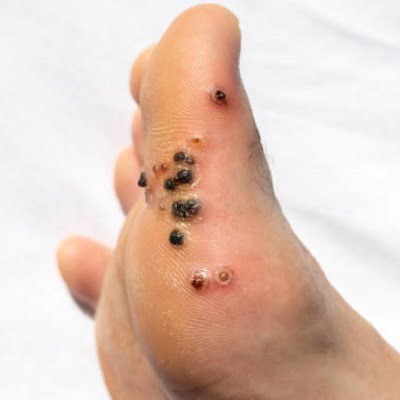
The human skin is a remarkable organ that serves as a protective barrier against external threats and environmental influences. However, it’s not uncommon for our skin to develop various imperfections and irregularities, one of which is the formation of warts in Islamabad. These small, often benign growths can appear on different parts of the body, causing discomfort and curiosity alike.
In this blog, we delve into the intriguing world of warts, exploring why they form on our skin and how we can manage them.
What Are Warts?
Warts are non-cancerous growths that develop on the skin’s outermost layer due to infection with certain strains of the human papillomavirus (HPV). This viral infection causes the skin cells to grow rapidly, resulting in a visible bump on the skin’s surface.
These can vary in appearance; they might be flat or raised, smooth or rough, and can range in colour from flesh-toned to darker shades. Though usually painless, warts can cause discomfort and self-consciousness due to their appearance, especially when they occur in visible areas such as the hands or face.
Causes of Wart Formation:
The primary culprit behind wart formation is the human papillomavirus. There are over 100 different strains of HPV, each with a preference for specific areas of the body. Warts are typically categorized based on their location and appearance, including common warts, plantar warts, flat warts, and genital warts.
- Direct Contact: Warts are highly contagious and can be transmitted through direct skin-to-skin contact with an infected individual. This often occurs in places where people gather, such as public swimming pools, locker rooms, and communal showers.
- Skin Breaks: Warts tend to develop more readily in areas where the skin has been compromised or injured. Scratches, cuts, and other openings in the skin provide an entry point for the HPV virus to infect and multiply in the skin cells.
- Weakened Immune System: A weakened immune system can make individuals more susceptible to HPV infection and subsequently to wart formation. This is often seen in people with conditions like HIV/AIDS or those taking immunosuppressant medications.
- Personal Hygiene: Poor personal hygiene practices can increase the risk of warts. Regularly washing your hands and maintaining clean skin can help prevent the spread of the virus.
- Age and Gender: Warts are more common in children and young adults due to their developing immune systems. Additionally, certain strains of HPV are more likely to affect specific genders.
Managing and Treating Warts:
While warts are generally harmless, they can cause physical discomfort and emotional distress. Fortunately, there are various methods for managing and treating warts, depending on their type and severity:
- Over-the-Counter Treatments: Many pharmacies offer topical treatments containing salicylic acid. These products work by gradually removing layers of the wart-infected skin over time. While effective for some, these treatments can be slow and may require consistent application.
- Cryotherapy: This procedure involves freezing the wart using liquid nitrogen, causing the wart to die and fall off within a few weeks. Cryotherapy is a common approach for treating warts, though it may require multiple sessions.
- Electrocautery: Using an electric current, the wart is burned off. This method is often used for larger warts and may result in some discomfort and scarring.
- Laser Therapy: Laser treatment targets the blood vessels feeding the wart, causing it to die and eventually fall off. This approach is more precise and often leads to minimal scarring.
- Prescription Medications: In some cases, a dermatologist may prescribe stronger medications, such as creams or ointments containing higher concentrations of active ingredients.
- Surgical Removal: Surgical procedures are reserved for particularly stubborn or large warts. The wart is excised under local anaesthesia, and this method typically leaves a scar.
Prevention Tips:
Preventing the formation of warts requires a combination of good hygiene practices and awareness of your surroundings:
- Avoid Direct Contact: Steer clear of direct skin-to-skin contact with individuals who have visible warts, especially if you have any cuts or openings in your skin.
- Protective Footwear: When using public facilities like swimming pools or locker rooms, wear protective footwear to reduce the risk of plantar warts on your feet.
- Healthy Immune System: Maintain a healthy lifestyle to boost your immune system. A balanced diet, regular exercise, and proper sleep can contribute to overall immunity.
- Personal Hygiene: Wash your hands regularly and keep your skin clean and dry, especially in areas susceptible to warts.
- Avoid Scratching: If you have a scratch or cut, avoid scratching it to prevent the entry of HPV.
The Bottom Line!
While warts might seem like a minor skin issue, understanding their causes and prevention methods is crucial for maintaining healthy and clear skin. The human papillomavirus is a complex and varied group of viruses that can lead to wart formation when given the opportunity.
By adopting proper hygiene practices, protecting yourself in public spaces, and seeking appropriate treatment when necessary, you can effectively manage and prevent the development of warts. Remember, if you’re concerned about any skin growth or change, consulting a dermatologist at SKN Cosmetic Clinic Islamabad is always a wise step to ensure accurate diagnosis and proper care.



